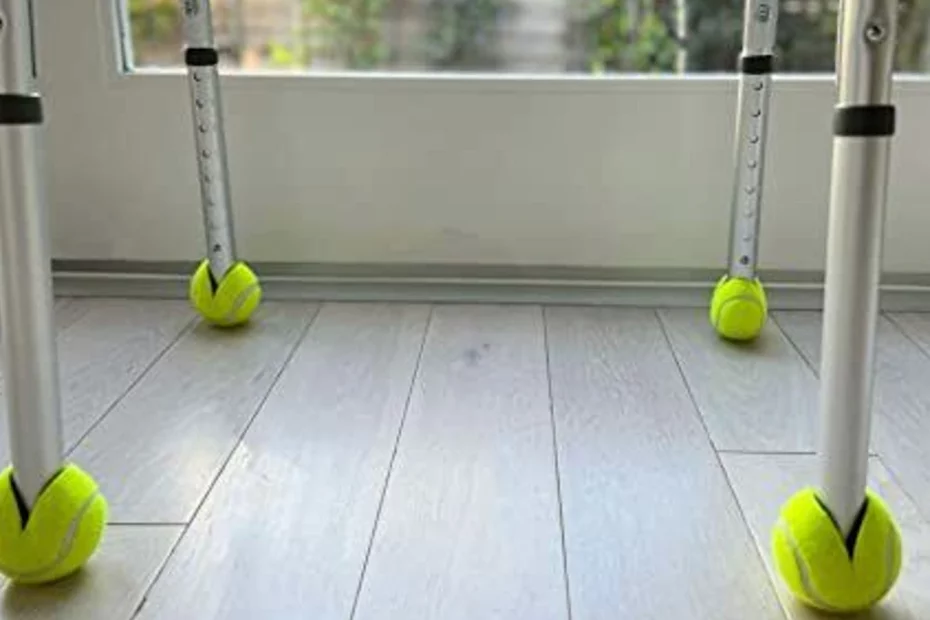If you want to know why Tennis balls are used at the bottom of walkers, including the benefits and drawbacks of doing so as well as various alternatives, Go through the very beautifully compiled article below on the same. It talks about the purpose of having tennis balls on walkers. The process to be able to do that, possible alternatives, and the issues associated with using these balls for a walker
Why Do People Put Balls At The Bottom of the Walker?
Walkers typically have rubber tips at the bottom, which is where the walker touches the walking surface. Nonetheless, the tips are often thin and cover less surface area, which tends to slip easily, and due to this, they don’t offer much stability. Placing tennis balls at the bottom of the walkers allows users to glide rather than lift them, improving traction and stability. However, putting tennis balls at the bottom of the walkers provides greater surface area than rubber tips. Tennis balls on a walker are an excellent idea for individuals of all ages. Be a senior citizen or a toddler aged 6-7 years. The freedom to slide about instead of holding part of the walker up is the key reason why so many people prefer this design. It can be a very frustrating experience, particularly for older people who may be unable to move at all.
Most Effective Indoors
Tennis balls will be much more useful on indoor tile and certain types of cement that have a coating on them, as tennis balls will not glide on untreated cement or pavement, and it is also difficult to do so on some types of carpet. Tennis balls are worth considering if you use your walker for sliding. While the rubber tips can slide slightly, they will wear out if treated in this manner. It can cost $20 or more to replace such tips, but brand-new tennis balls just cost under $1. Don’t you think it is a great option instead of spending $20 on something that might not be useful in the long run?
People Who Should Use Tennis Balls on Walkers
Elderly adults with quite strong legs may find it more convenient to glide around on their walker rather than use it traditionally. It all boils down to personal preference, and some people enjoy the concept of slipping. It requires significantly less effort if the walker moves smoothly, which is always a pleasant thing after a long day of traveling.
They are particularly beneficial for younger children since they allow them to be more active with their walkers. It can still be used traditionally, but the glide factor is quite important. Children do not want to be confined in any way by their walkers. This appears to be more natural to them. Also Read: 10 Best Tennis Umpires In The World
Arguments Against
Although walkers are considered to be one of the best options, There are several disadvantages to using tennis balls on walkers.
- Attaching a tennis ball at the end of the walker helps loads with stability, however, when the tennis balls get worn out, there might be a chance of uneven grip.
- It is very obvious that when tennis balls are attached below will collect dirt and germs. It is not at all considerable for old people and toddlers as well. As they have low immunity, which might trigger their health.
- The above condition makes a compulsion of changing the balls frequently, which adds to the cost.
- It might not be convenient for each and every person to use tennis balls with walkers. Also Read: Different Types Of Tennis Grips Explained With Their Size
How to attach a tennis ball to Walker? A 6-step guide.
Read the aforementioned 6-step guide in order to know how to attach a tennis ball to a walker.
- The foremost step is to put a Hole into the ball with a knife or a scissor.
- Instead, do the first step completely, as soon as the hole is made. Change the direction and try to cut in the shape of an X.
- Open the four Flaps made on the ball such that, it is easy to enter the legs of the walker.
- Insert the ball, into the legs of the walker and check if it fits correctly.
- Push all the flaps in an upward direction, so that it may get fit.
- Extra tape and glue could also be used.
